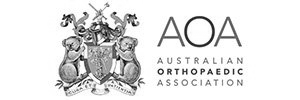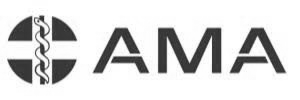Labrum Repair Surgery
What is Labrum Repair Surgery?
Arthroscopic Labrum Repair Surgery is a type of shoulder reconstruction and stabilisation surgery.
This procedure can be considered for patients who have torn or stretched ligaments and other soft tissues in the shoulder that cause Shoulder Instability
Shoulder reconstruction surgery involves repair of the torn or stretched ligaments so that they are better able to hold the shoulder joint in place.
What Bankart Repair Surgery Treat
Shoulder instability most commonly occurs as a result of a Bankart Injury or Tears
Bankart Tears is a specific injury to a part of the shoulder joint called the labrum. Labrum is a ring of fibrous cartilage that surrounds the glenoid and stabilises the shoulder joint.
Bankart Tears can lead to recurrent dislocations, feeling of looseness, lack of strength, pain or clicking and arthritis of the shoulder.
Arthroscopic Shoulder Surgery
The procedure is performed after appropriate diagnostic assessments, pre surgery checks and preparations are complete in hospital and takes typically less than 2 hours. Typically, Labrum Repair surgery is performed using a minimally invasive technique and under general anaesthesia with the patient in a semi-reclined or beach-chair position, it involves:
- Three small incisions(portals) are made. Each incision is called a portal.
- Arthroscope is inserted to view the shoulder joint, giving the surgeon a clear view and room to work.
- Sterile solution is pumped to the joint which expands the shoulder joint,
- Assessment of the extent of the injuries and perform the necessary surgical procedure.
- Repair of the torn ligaments so that they are better able to hold the shoulder joint in place.
- Tighten overstretched capsules and ligaments
- Reattach Torn Labrum back to the shoulder socket with the help of special anchors
- After stabilising the shoulder, the portals (incisions) are closed by suturing or by tape.
Arthroscopic Shoulder Surgery Preparation
Once you and the doctor have decided that surgery is required, preparation is necessary to achieve the best results and a quick and problem free recovery.
- Infections - Treat any tooth, gum, bladder or bowel problems before surgery to reduce the risk of infection
- Smoking - Stop or cut down smoking to reduce your surgery risks and improve your recovery
- Weight - Consider losing weight (if overweight) before surgery
- Medications - Refrain from taking medications or dietary supplements that may increase your risk of bleeding - refer Medication Information
- Fasting - Depending on the type of anaesthesia used, your doctor may advise you to refrain from eating and drinking six to twelve hours before the procedure.
- Getting Home - You will not be allowed to drive yourself home after the procedure, so make arrangements for someone to pick you up. If you live alone, arrange for someone to check on you that evening or, ideally, to stay with you for the rest of the day.
- Loose Clothing - If you're having surgery, wear loose, comfortable clothing, such as baggy gym shorts and slip-on shoes, so you can easily undress and dress.
Returning Home After Surgery
When you go home you need to take special precautions around the house to make sure it is safe. Your post operative plans should include:
- Mobility or Stability - changes (rails in your bathroom, ramps for stairs)
- Sleeping - modify your sleeping arrangements (especially if you are sleeping upstairs) for easy access
- Access - ensure you have easy access to food, water, medications and any other essentials
- Showering - will be allowed once the wound is healed, or as indicated
Assess your home situation to ensure you have adequate home support in the first few weeks following surgery. If you live alone it may be necessary to arrange a package of community care to help during the first few weeks at home.
Arthroscopic Shoulder Surgery Process
Arthroscopic Shoulder Rehabilitation Program
Arthroscopic Shoulder Risks & Complications Associated
Surgical Follow Ups
How Risks Are Minimised
Get Moving Quickly
Early mobilisation is a major preventive measure. We strongly encourage you to get moving and out of bed as soon as possible after the operation to restore normal blood flow in the legs.
You should aim to do at least ten short walks (of between 2 and 5 minutes) each day in the first two weeks after surgery.
How Can I Minimise Post Operative Complications
Blood clots (DVT or PE)
All patients receive a number of treatment measures to reduce the risk of blood clots. These include
- Injections of heparin during and after surgery,
- Sequential calf compression device (SCD) whilst on the operating table, and
- Special leg stockings (TEDS)
As a result of these measures, we have never had a patient develop a deep venous thrombosis. Any patient who is at high risk of a blood clot (such as a history of blood clots or clotting disorders) may be asked to continue heparin (Clexane) injections for 10 days after the surgery in addition to the other measures. This can be done at home, and we will show you how.
What Are the Consequences of Surgery?
Sometimes the potential risks and consequences of your surgical procedure need to be weighed against the benefits of a successful surgical outcome.
Like most surgery these benefits can include:
- Freedom from pain
- Increase movement
- Greater Flexibility,
- Maintained Independence
- Improved outlook, and
- Longer more enjoyable life
Although the recurrence of the presenting problem is not very common, after surgery, you would need to follow preventive measures.
It is important to avoid high impact activities during the early phase of recovery to minimise the risk of further injury. If there are any postoperative concerns or pain, please do not hesitate in contacting our rooms.





